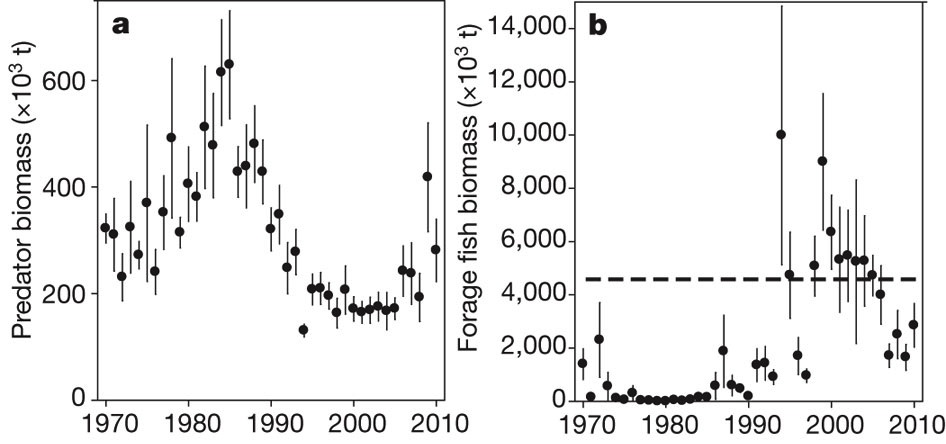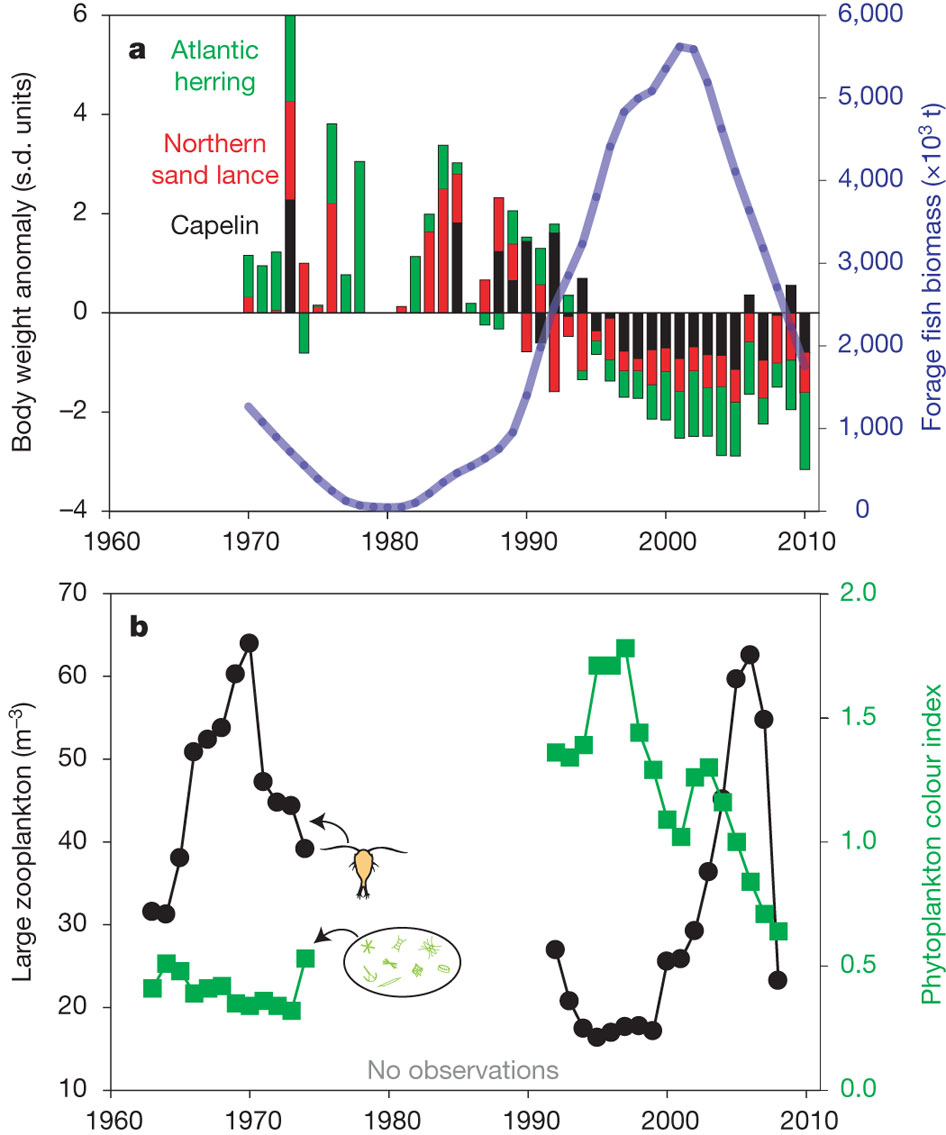The catastrophic collapse of the mighty cod in the early 1990s was an iconic disaster in the history of humankind’s relationship with the ocean. New research now shows that, after decades of near extinction, cod is rebounding and dragging the collapsed ocean ecosystem back with it — bringing a rare and welcome ray of hope to an otherwise dark story.
This fish was once so abundant throughout the north Atlantic that it literally fueled the expansion of European civilization to the new world, starting with the various intrepid fishermen and rogues and viking raiders that braved the unknown waters of “Ocean”, as the north Atlantic was called when the known world comprised the fringes of the Mediterranean. Cod fueled the new American colonists’ prosperity, and they named the barrier of their Massachusetts Bay colony for it in in gratitude. Dried and salted cod from Canadian waters also fueled the less savory triangle trade that exchanged Africans as slaves for sugar in the West Indies for rum to colonial North America. To this day “saltfish” — salted and dried Canadian cod packed in wooden boxes — is, paradoxically, a staple of the diet of Jamaicans, as I learned when I spent some time there a few years ago. All of this is told in Mark Kurlansky’s breathtaking book Cod. A biography of the fish that changed the world.
Until the late 20th century, cod also supported a huge north Atlantic fishery and much of the economy of the Canadian maritime provinces. Then, in the early 1990s, the bottom fell out. This is not the place for a deconstruction of the various intrigues that led to this collapse (well covered in Longhurst’s fascinating new book, which I will review here shortly), but suffice it to say that relentless overfishing was the principal player in that drama. Finally in 1993, after years of warnings from scientists, but alas too late, the Canadian government declared a moratorium on cod fishing on the Scotian shelf.
The cod did not come back. Hands were wrung, fingers were pointed, seaside towns decayed, vessels rusted. The collapse of cod through much of the north Atlantic, and especially maritime Canada, shed harsh new light on the sausage-grinder of fisheries management, raised sharp questions about some of the fundamental assumptions of fishery management, and brought into stark relief the daunting complexity and interconnections that characterize the ecosystems from which we take fish. The story has entered the central mythology, if you will, of marine environmental science.
But the collapse of cod was not simply the loss of a fish. It transformed the entire shelf ecosystem of the affected area in the north Atlantic through a trophic cascade, as documented by Ken Frank and colleagues in 2005. Cod feed heavily on pelagic fishes — herrings, capelin, and the like — and these in turn feed on zooplankton, which feed on phytoplankton. When the cod collapsed, the planktivorous fishes exploded, hammering the zooplankton and allowing big blooms of planktonic algae that colored the sea green. A classic trophic cascade, on a colossal scale.
Importantly, this cascade appeared to shift the system into a new “regime” or semi-stable state. It was, for all practical purposes, another ecosystem. Basically, the rise of pelagic fishes was apparently able to prevent the resurgence of cod even after fishing ceased because the pelagics are generalist feeders on zooplankton and the cod, like most fshes, must pass through a tiny larval stage that lives in the plankton. The situation was a predator-prey role reversal in which pelagic fishes fed on the larvae of their own predators!

But, eventually, the pelagic party came to an end. The herrings began declining and the cod are starting to surge again. Happy day! But why?
This is where the new research comes in. Frank and colleagues used a decades-long, fishery-independent data set monitoring everything from cod on down to phytoplankton to show that the pelagic fishes overshot their carrying capacity, which is a fancy way of saying that they ate themselves to death (see first figure). Not really to death, but to the point where their numbers began to decline due to scarcity of their zooplankton food.

The authors deduced what was happening not only from the opposite trends through time of cod and their prey, but also from the body condition of the pelagic fishes, which declined as their numbers increased (see figure at right). Sure enough, as the pelagics delined, their zooplankton prey rebounded, and the phytoplankton followed suit, declining in abundance as the ocean transitioned back to a relatively clear blue state. The ecosystem is bending back into its former “regime” or semi-stable state.
What does this mean for the future of cod? It is certainly a bright spot, and a reassuring sign that at least some ecosystems can eventually rebound when major stressors are lifted. But it also delivers the sobering message that this may take a long time — decades in this case. And there are other complications to keep in mind, as the authors note:
“Recovery in other over-exploited ecosystems such as the Black Sea, Northern Benguela, the Sea of Japan, and elsewhere has been delayed by jellyfish blooms, the presence of invasive species and by eutrophication, all of which are possible in the system we describe. The widespread body size reductions of benthic fishes documented for other exploited northwest Atlantic systems, if not reversed, could also slow the recovery of the benthic fish complex and adversely affect food web structure. The evolving global climate could alter the ecosystem positively or negatively. These uncertainties notwithstanding, the answer to the critical question of whether or not such profound changes in the dynamics of large marine ecosystems are reversible seems to be ‘yes’. This bodes well for other perturbed, formerly cod-dominated systems at latitudes to the north of the eastern Scotian Shelf that have yet to recover. Indeed, subtle signs of cod recovery have been appearing in other sub-arctic northwest Atlantic ecosystems during the past few years.”
Original source: Frank KT, Petrie B, Fisher JAD, Leggett WC. 2011. Transient dynamics of an altered large marine ecosystem. Nature doi:10.1038/nature10285 (published online 27 July 2011)


Leave a Reply to Charlotte Vick Cancel reply